Search Results
Fine Jewelry University Articles matching: “green gemston”
Showing only FJU Article results. Click here to show all results.
Fine Jewelry University (Show All FJU Articles)
-
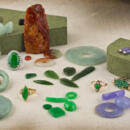
Gem in the Spotlight: Jade
Jade has one of the richest heritages of all gemstones. People have been using jade from as early as 6,000 BC, and it has been an incredibly important part of Asian, … toughness, can be carved, and can be taken to a high polish. Nephrite is commonly found in a darker olive green color but can also be very light green, orangey-red, black, and yellowish green. Jadeite can come in many different colors … pink, purple (often called lavender jade), blue, black, white, and the most valuable/desirable color: a vibrant green. The finest of all green jadeite colors is a saturated emerald green that is almost transparent, and it is called “…
-
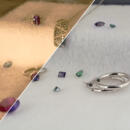
Gem in the Spotlight: Alexandrite
…has remained ever since. In its short history, alexandrite has set multiple records at auctions including a 21-carat gemstone selling for 1.49 million dollars which works out to over $70,000 per carat! Alexandrite is said to bring luck, … a high-quality stone will last for generations. Why Alexandrite? Alexandrite is simply one of the most magnificent gemstones that exists. Its almost magical ability to change color has captivated our hearts and minds for generations. …
-
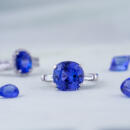
Gem in the Spotlight: Tanzanite
Beauty and rarity are two wonderful traits in a gemstone. Tanzanite has them both. In fact, it is estimated that Tanzanite is 1,000 times rarer than diamond. But, what … that isn’t heated and is still pretty enough for jewelry displays trichroism. Trichroism is an effect that causes gemstones to display different colors when viewed at different angles. Tanzanite in its raw form has three colors: blue, …has been heated by using a dichroscope. This is a tool that gemologists use to separate the pleochroic colors that a gemstone has. If there is a strong green component at any angle, then it likely has not been heated. The main factors that …
-
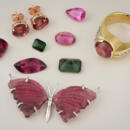
Gem in the Spotlight: Tourmaline
… for daily wear. Because it isn’t exceptionally hard (Mohs hardness of 7-7.5), it should be stored away from other gemstones that could potentially damage it. Tourmaline should not be put into an ultrasonic cleaner or steam cleaned, and …: is red, pinkish red, orangy red, or pink tourmaline. Indicolite: is dark blue, dark violetish blue, or dark greenish blue tourmaline. Paraíba: is a copper colored blue, intense violetish blue, or greenish blue tourmaline from Paraíba, …
-
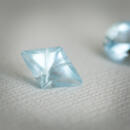
Gem in the Spotlight: Aquamarine
…, aquamarine was believed to guarantee a happy marriage and inspire mutual fidelity in newlyweds. Notable Aquamarine Gemstones The largest gem-quality aquamarine gemstone ever mined was 19 inches long. The largest cut aquamarine is named the… that the stone is not damaged. Caring For and Cleaning Aquamarine To maintain the brilliance of this beautiful gemstone, it should be immersed in jewelry cleaner or in lukewarm soapy water and cleaned with a small bristle brush. Don’t use …
-
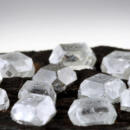
Is a Lab Grown Diamond Right for Me?
Picking a diamond for your engagement ring is a big decision. For most of us, buying a diamond is a significant financial undertaking, and we want to get it right. Unfortunately, understanding diamonds takes a lot of specialized knowledge that most people don’t have (anyone remember their refractive indexes from high school physics?). Even more unfortunately, the diamond industry suffers from a lot of misinformation and paranoia both from inside the trade and from outside observers. I have heard people say that natural diamonds come with a 400% mark up,
-
Synthetic Gems: The Whole Story
Synthetic rubies, emeralds, sapphires, diamonds and more are everywhere. Man made gems come in many forms: every thing from simple glass to high tech chemical tongue twister like gadolinium gallium garnet (also called GGG) and the modern diamond simulant moissanite. Synthetic gems are not bad, fakes, or the curse of a modern society. The more you know about them, the better you can understand their place in our society and in the jewelry world.
-

How to Tell If a Diamond Is Natural or Lab Grown
How can I know if my diamond is real? This is a question we get all the time, and it’s not as simple as you might think. First, you have to decide what “real” means. If you are not familiar with lab grown diamonds, you might want to check out our introduction to lab grown and synthetic diamonds before continuing with this article. So, now you know that lab grown diamonds are just as real as natural diamonds, but we still want to be able to tell them apart. When
-
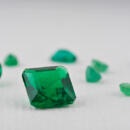
Gem in the Spotlight: Emerald
Springtime exudes life, full of bright colors and renewed energy. Emerald, May’s gemstone, captures this enthusiasm for life in rich elegance. This precious gemstone has been revered for over 4,000 years … other quartz varieties. The refractive index of emerald ranges from 1.57 to 1.58, making it a moderately refractive gemstone. Its specific gravity ranges from 2.65 to 2.75. One of the distinctive features of emeralds is that they often … to green than to any other color thereby making it easier on the eyes. Pliny said that emeralds were the only gemstones that delighted the eye without fatiguing it. In fact, Emperor Nero was said to wear a kind of emerald glasses to watch …